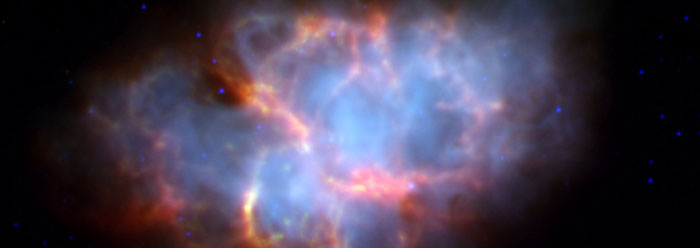The ongoing quest to find life in space has failed to yield any supportive evidence that life exists outside the earth. To prop up the idea of distant spontaneous life formation, some scientists are willing to settle for science fiction. One Serbian astrobiologist has taken cues from evolutionary paleontology—and maybe even from comic books.
Milan Ćircović of the Astronomical Observatory in Belgrade argued in a recent issue of Astrobiology Magazine that cosmic disasters might set up just the right conditions for life to evolve from chemicals. He speculated that habitable planets and the “stuff of life” that they supposedly nurture may get periodically reset by catastrophic events “like gamma ray bursts or nearby supernovae.”1 This reasoning is similar to evolutionary concepts of how life could have diversified on earth through mass extinctions.
In contrast to the classic Darwinian model—which predicts that fossils should show gradual change between transitional kinds—many fossils retain the same forms through several rock layers, and wholly different fossil kinds abruptly occur in other layers. This is generally interpreted to mean that evolution sometimes advances in sudden jumps. Somehow, natural disasters that cause massive death are assumed to kick macroevolution into overdrive.
Organisms do undergo rapid variations to fill empty niches formed after catastrophes. But they always remain within their own kinds. A dramatic transition between kinds has never been observed and, since the evolutionary “jump” is presumed to have occurred during an imagined time between the formation of certain rock layers, has left no record—only the conspicuous absence of transitioning life forms is noticeable.
In spite of the lack of evolutionary evidence, Ćircović proposed that cosmic disasters could similarly kick-start the seeds of life: “A gamma ray burst…would affect how quickly life develops or takes hold by causing changes in atmospheric chemistry on the planet.” Perhaps “interstellar electromagnetic radiation and cosmic rays” influence a planet’s biological environment and somehow help evolution along.1
These destructive processes are being invoked as possible agents for generating the right conditions for life to evolve—the same conditions that origin of life researchers have been unable to replicate through almost a century of intelligent, purposeful experiments.2
This gamma ray concept is reminiscent of comic book legend Stan Lee’s The Incredible Hulk, in which the hero, Dr. Bruce Banner, gets a mega dose of the otherwise deadly gamma radiation.3 The result: Banner can transform into the super-strong, super-sized green giant that has graced big and little screens in recent times.
To be clear, Ćircović is not proposing that life itself is improved or could be started by gamma ray bursts, but that the planetary conditions for supporting life could be. But is that really any less fanciful or more scientific? To say that the destructive forces that occur near galactic cores, where planets supposedly form, can foster life-sustaining environments is as much science fiction as Lee’s Hulk.
Supposedly, gamma ray bursts, cosmic rays,4 and supernovae “can be interpreted as resetting astrobiological clocks which tick on each habitable planet in the Milky Way.”1 There is not a shred of scientific evidence that astrobiological clocks exist anywhere in the universe, except in comic book-like hypotheses. For that matter, the only habitable planet yet discovered is earth, just as the biblical creation model predicts.5
References
- Moskowitz, C. 2009. Life May Depend on Galaxy. Astrobiology Magazine News. Posted on astrobio.net August 13, 2009, accessed August 13, 2009, reporting on research published in Ćirković, M. M., B. Vukotić and I. Dragićević. 2009. Galactic Punctuated Equilibrium: How to Undermine Carter's Anthropic Argument in Astrobiology. Astrobiology. 9 (5): 491-501.
- Thomas, B. Origin of Life Research Still Dead. ICR News. Posted on icr.org October 27, 2008, accessed August 17, 2009.
- Lee, S. May 1, 1962. The Incredible Hulk, Part 1. Marvel Comics, 4.
- In a similar comic vein, the Fantastic Four received their superpowers from “cosmic rays” while they were in outer space.
- Bergman, J. The Earth: Unique in All the Universe (Updated). Originally published in the June 1985 edition of Acts & Facts.
* Mr. Thomas is Science Writer at the Institute for Creation Research.
Image Credit: NASA/JPL
Article posted on August 19, 2009.

















